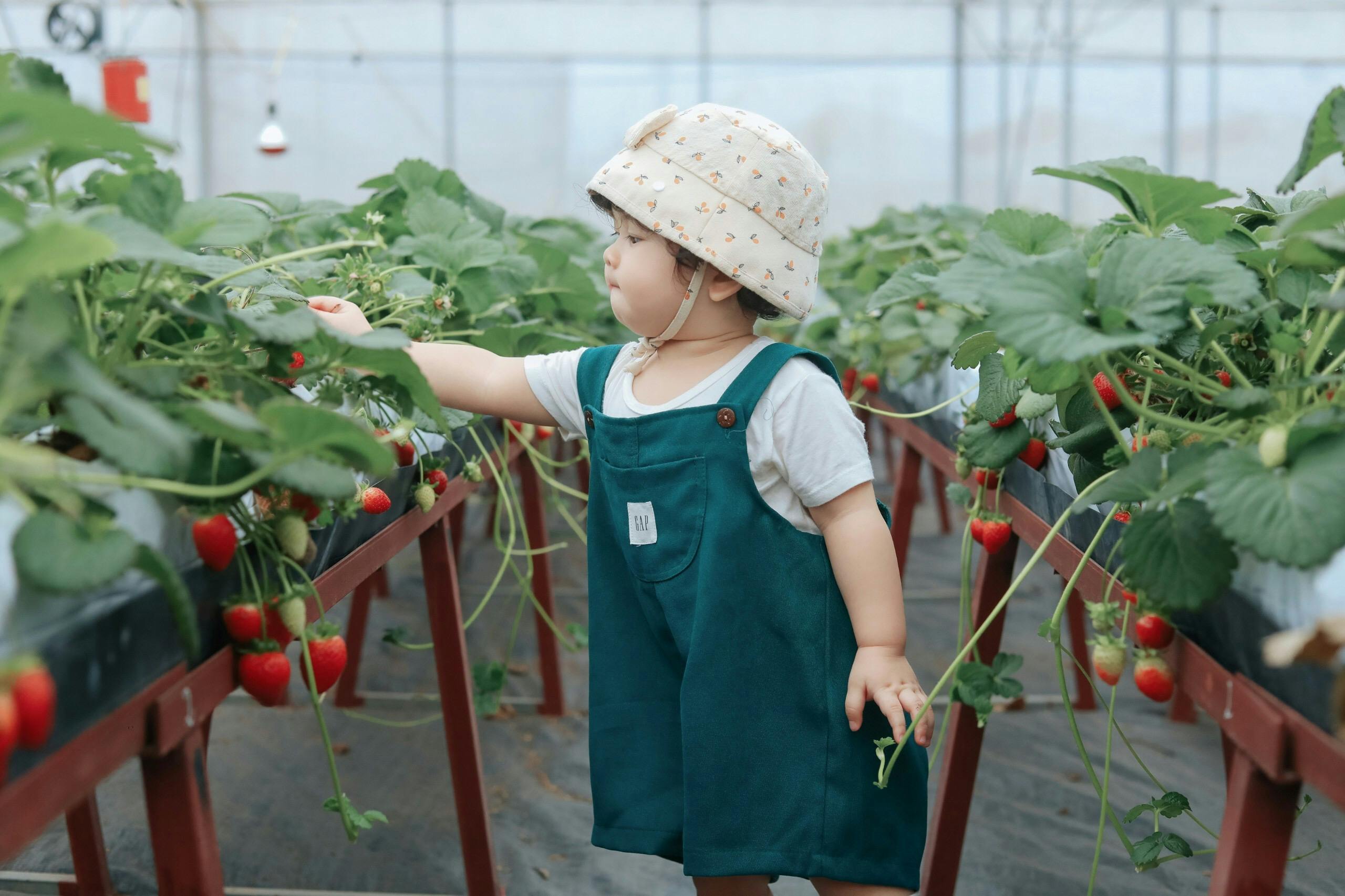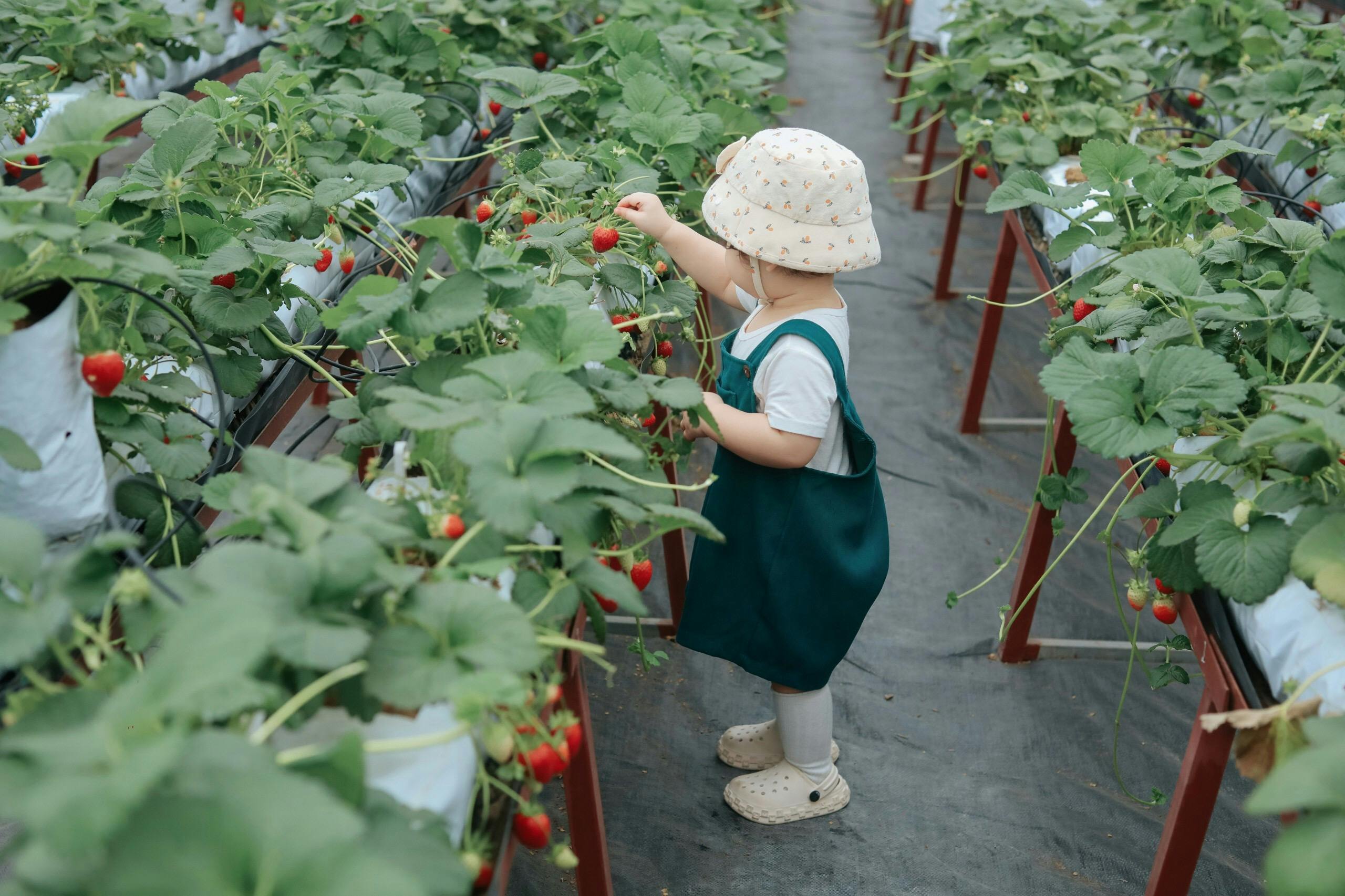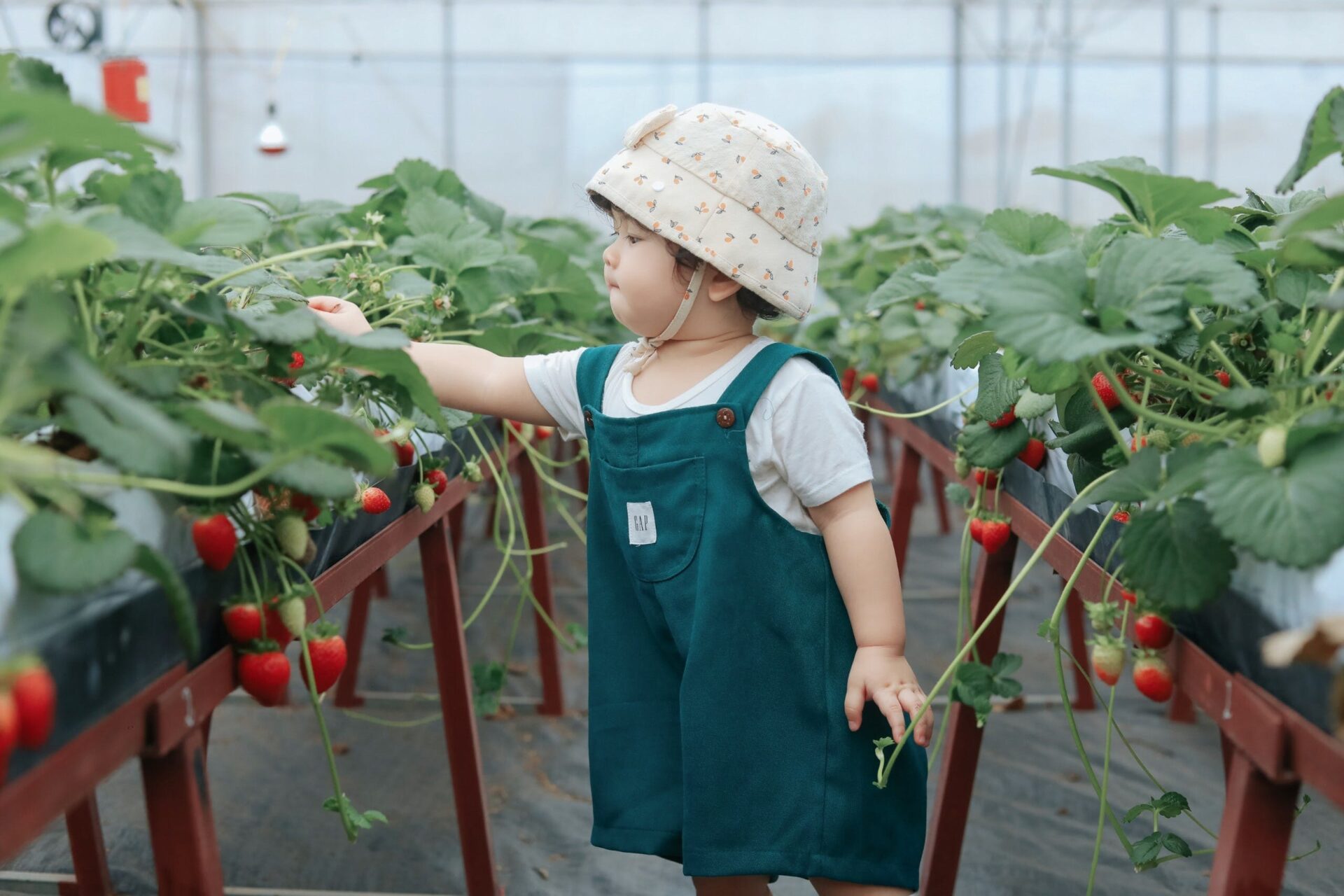Pollinating strawberries in a greenhouse can be an important part of producing a successful crop. Greenhouse pollination differs from outdoor pollination as the environment of the greenhouse is different. In this article, we’ll explain the steps you need to take to successfully pollinate strawberries in a greenhouse.Preparing a Greenhouse for Pollinating Strawberries involves several steps. Start by removing any weeds from inside the greenhouse and raking the soil. Prune any existing strawberry plants, keeping flowers and fruits intact. Next, create an environment conducive to pollination by ensuring adequate ventilation and light. Open windows or vents to allow air circulation, and add supplemental lighting if necessary. To attract pollinators such as bees, provide a water source nearby and place flowering plants inside the greenhouse. Finally, introduce bee colonies or use hand pollination methods to ensure successful pollination of the strawberries.
Choosing the Right Pollinators
Pollinators are an essential part of our environment, helping to ensure the health and productivity of our food sources. They enable plants to reproduce and produce fruits, nuts, and vegetables. Therefore, it is important to choose the right pollinators for your garden or farm.
When selecting pollinators, you should consider the types of plants that will be grown in the area, as well as the climate and geography. Different species of pollinators are suited for different climates and locations. For example, bees may be better suited for warmer climates while moths and butterflies are more suitable for cooler areas.
The type of plants you will be growing is also a key factor in deciding which pollinator to choose. Different species of pollinators specialize in certain types of flowers or plant species. Knowing which flowers will be grown will help narrow down the selection process.
In addition to finding compatible pollinator species, it is also important to consider the number of pollinators needed for a given area. If there are too few pollinators available, they may not be able to adequately cover all of the flowers in a garden or farm. On the other hand, having too many can result in competition between them or overcrowding of resources such as nectar and pollen sources.
Finally, you should also consider how friendly these pollinators are towards humans when making your choice. Honeybees are very beneficial towards humans but can sometimes become defensive if disturbed or threatened by people; whereas moths and butterflies tend to be less aggressive around humans and other animals but may not be as effective at transferring pollen from flower to flower due to their size and weight restrictions.
By taking into account all these factors when selecting pollinators for your garden or farm, you can ensure that you have chosen species that will best suit your needs and provide optimum benefit for both your plants and environment alike.
Timing the Pollination Process
Pollination is an essential process for the growth of many plants and flowers. It is a crucial part of the life cycle of a plant, as it helps to ensure that fertilization and seed production occur. In order for pollination to work effectively, it is important to ensure that it takes place at the right time. This means that timing the pollination process carefully can help ensure a successful outcome.
One way to time the pollination process is by observing the flowering period of different plants and flowers. Knowing when a particular plant or flower blooms can give you an indication of when you should start pollinating it. For example, if you know that a particular flower blooms in late spring, then you should start pollinating it before this time in order to maximize your chances of success.
Another way to time the pollination process is by studying weather patterns in your area. Certain weather conditions are more conducive to successful pollination than others, so it pays to be aware of when these conditions are likely to occur in your area. For example, if you live in an area where there is often high humidity in late summer, then you should plan your pollination efforts around this time in order to maximize your chances of success.
Finally, timing the pollination process can also involve making sure that you have enough resources available for successful pollination. This includes ensuring that there is enough pollen available for insects or other animals to carry from one flower or plant to another. Additionally, ensuring that there are sufficient numbers of bees or other insects present during flowering times is important for successful pollination as well.
In conclusion, timing the pollination process carefully can be an essential part of ensuring successful fertilization and seed production for many plants and flowers. By observing flowering periods and studying weather patterns in your area, as well as making sure that you have adequate resources available for successful pollination, you can increase your chances of success significantly.
Setting Up the Pollination Process
Pollination is an essential part of the reproductive process for many plants. It is the process of transferring pollen from one flower to another, allowing for fertilization and the production of seeds. It can be done naturally by animals, such as bees and butterflies, or artificially by humans. Setting up a pollination process can be a simple, yet rewarding task that can help increase crop yields and ensure healthy plants and flowers.
The first step in setting up a pollination process is to determine what type of pollinators you need to achieve successful pollination. If you plan on using natural pollinators, such as bees or butterflies, then you will need to provide them with food sources in order to attract them to your garden or farm. This could include planting flowers that attract these pollinators or providing man-made feeders filled with sugar water or other sweet treats.
Once you have determined what type of pollinators you need, it is important to ensure that your plants are properly prepared for pollination. This includes ensuring that the pollen-bearing male parts of the flower (stamens) are exposed and easily accessible for transfer to the female parts (stigmas) of other flowers. If your plants are not properly prepared for pollination, then it may be difficult for any successful fertilization to occur.
Finally, if you are using artificial methods such as hand-pollinating or using a brush, then you will need to make sure that all necessary equipment is available and in good working order before proceeding with your pollination efforts. This includes having a brush made specifically for this purpose as well as any other tools needed to transfer pollen from one flower to another. Once all necessary supplies have been gathered and checked, then you can begin your pollination process!
Ensuring Adequate Light and Temperature
Providing adequate light and temperature for your plants is important to ensure healthy growth. Without sufficient light, plants can suffer from nutritional deficiencies or become too leggy, while too much light can burn them. The amount of light needed by a plant depends on the type of plant you have and the environment it is in. Temperature also plays an important role in a plant’s health, with temperatures that are too high or low having an adverse effect on growth. The ideal temperature range for most plants is between 65°F and 75°F (18°C-24°C).
To provide your plants with the right amount of light, you can use natural sunlight, artificial lighting, or a combination of both. Natural sunlight is the most cost-effective way to provide light to your plants, but it may not be available in all climates or during certain times of the year. Artificial lighting can supplement natural light when needed or be used as a primary source of light for indoor growing. When using artificial lighting, make sure to choose bulbs that emit the right type of light for your particular plant species.
Maintaining an appropriate temperature for your plants is also essential to their health. If temperatures get too low, some plants may suffer from frost damage while others may experience stunted growth or wilting leaves. On the other hand, if temperatures get too high, some plants may burn from excessive heat exposure while others may develop spots on their leaves due to sunburn.
By providing adequate light and maintaining appropriate temperatures for your plants, you’ll be able to ensure healthy growth and development over time. Be sure to check on your plants regularly and adjust their environment as needed in order to keep them thriving!

Keeping Pollinators Healthy and Happy
Pollinators are essential for the health of the planet’s ecosystems, providing a vital service by pollinating plants and helping them to reproduce. Unfortunately, pollinators such as bees, butterflies, and moths are in danger due to various threats including habitat loss, pesticide use, climate change, and disease. It is essential that we work together to protect pollinators and ensure their survival.
One of the best ways to keep pollinators healthy and happy is to create a habitat that provides them with food, water, shelter, and nesting sites. This can be done by planting native species of flowers that attract pollinators and provide them with nectar and pollen. Additionally, providing water sources such as bird baths or shallow dishes filled with stones can help keep pollinators hydrated during hot weather. Avoiding the use of pesticides is also important – organic gardening practices can help reduce the amount of chemicals in the environment that can harm pollinators.
In addition to creating an environment conducive for pollinator survival, we can also work together to raise awareness about their importance. This includes educating ourselves on how we can help protect these species from further decline. By getting involved in local conservation efforts or donating to organizations working on behalf of pollinator protection we can all do our part in preserving these species for future generations.
Ultimately it is up to all of us to take action in order to protect our precious pollinators from further decline. By creating habitats for them that provide food, water, shelter and nesting sites we can help ensure their survival while also raising awareness about their importance in our ecosystems. With everyone doing their part we can ensure that these amazing species will be around for many years to come!
Maintaining Humidity Levels in the Greenhouse
Maintaining the right humidity level is essential for a successful greenhouse. Too high or too low levels of humidity can cause plants to become stressed and fail to thrive. However, achieving the optimal humidity level can be challenging as it needs to be monitored and adjusted regularly.
Humidity levels are affected by many factors, such as temperature, ventilation, light, and water evaporation. High temperatures will increase evaporation from soil and plants, leading to a decrease in relative humidity (RH). In contrast, lower temperatures will reduce evaporation and increase RH. Ventilation is also important as it helps to circulate air and remove excess moisture.
The most effective way to maintain the desired RH in a greenhouse is by using a humidifier or dehumidifier. A humidifier will add moisture to the air when the RH is too low and a dehumidifier will remove moisture when the RH is too high. The ideal RH for most plants is between 40-60%.
In addition to using humidifiers/dehumidifiers, it is important to monitor and adjust other environmental conditions in order to maintain optimal humidity levels. For example, increasing ventilation can help reduce RH if it gets too high and reducing light intensity can help reduce evaporation from leaves if RH gets too low. It’s also important to water plants properly so that they don’t become stressed due to lack of moisture.
Overall, maintaining proper humidity levels in a greenhouse is essential for keeping plants healthy and productive. By monitoring environmental conditions regularly and using humidifiers/dehumidifiers when necessary, you can ensure that your plants get just the right amount of moisture they need.
Protecting Plants from Disease and Pests
Plants are susceptible to various diseases and pests that can cause damage to crops and gardens. Fortunately, there are a number of ways to protect plants from disease and pests, including using natural methods such as companion planting, crop rotation, mulching, and using beneficial insects like ladybugs. Using chemical methods such as pesticides can also be effective in controlling disease and pest populations.
Companion planting involves selecting plants that have a natural defense against certain pests or diseases. For example, garlic works well as a companion plant by repelling aphids from nearby plants. Similarly, marigolds repel nematodes that attack the roots of other plants in the garden. Crop rotation is another natural method of controlling disease by preventing the buildup of pathogens in the soil for particular crops. Rotating different crops into the same area each year can help reduce the chances of disease.
Mulching is an effective way to protect plants from both pests and diseases. Organic mulches provide insulation for plants while preventing weeds that may harbor pests or diseases from growing close to them. Mulching also helps retain moisture in the soil which reduces stress on the plant during dry spells. Lastly, adding beneficial insects like ladybugs to a garden can help control pest populations without using chemical pesticides. Ladybugs eat aphids and other soft-bodied insects which helps maintain balance in a garden ecosystem.
Though natural methods are often preferred over chemical methods for protecting plants from disease and pests, sometimes using chemical pesticides may be necessary if infestations are severe or if natural methods are not working effectively enough on their own. If chemical pesticides are used, it’s important to use them responsibly by only applying when necessary and following all label instructions carefully.
No matter what method is chosen for protecting plants from disease and pests, it’s important to stay diligent with regular monitoring for signs of infestations or other issues so that they can be addressed quickly before they cause too much damage.

Conclusion
Strawberries can be easily pollinated in a greenhouse environment. The key points in this process involve having the right number of pollinators, ensuring the pollinators have access to the flowers, and making sure that the flowers are exposed to wind or air currents for proper pollination. Additionally, it is important to monitor your plants regularly and ensure that any pests or diseases are controlled. Finally, if needed, manual pollination can also be used as an effective way to increase yields.
With these tips in mind, strawberry growers can successfully and easily grow strawberries in their greenhouses while achieving higher yields than ever before!



